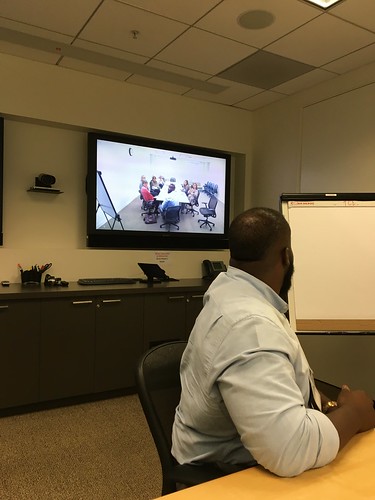
This photo is from an open space session during last week’s Funders Learning Lab: Investing In Network Leadership. I proposed a session with a title, “Going from Self Care to We Care” to talk about how do we scale a culture of self-care in networks. The networks, nonprofits organizations, and movements are filled with people who are passionate about social change work, but often work hard and long with few resources and many just keep going without giving a thought to self-care.
I posed the question, “How can we go from “self-care to we-care?” In other words, not just having an individual realize the importance of self-care and changing their behavior, but making it part of the culture of the way we work in our sector.
I was lucky enough to end up in conversation with Allen Kwabena Frompong, one of the movement leaders from BLM NYC. He shared an amazing story about how people in the movement self-organized individual wellness plans for each other. They did this with few resources, relying on people with professional experience in the wellness area to help with an assessment survey so they could formulate customized wellness plans. The plans are being implemented with a gift economy and social proofing or accountability buddy check-ins via social media.
The Guardian Voluntary Twitter account tagged me in a post to mark World Mental Health Day that included a link to this article, “Charities Risk Loosing Staff if They Don’t Pay Attention to Wellness,” which is part of a larger series of articles exploring physical and mental well being in the nonprofit sector. The article has some terrific anecdotes and stories about scaling a wellness culture.
- Wellcome Trust: This health care funder has a work culture that encourages their staff to move around – they don’t need to be sitting at their desks to be working. In other words, they encourage people to move around during the work day and that they don’t need to eat lunch at their desks. They also encourage stand up and walking meetings.
Mind: This mental health charity encourages staff to create a “Wellness Action Plan” with their supervisor. The plan identifies specific support needs, accountability buddy system, flexible working hours and other typical features of an organizational wellness plan. What is usual is the inclusion of “mind days” – an extra six days of holiday a year on top of the regular 25. In addition, they offer yoga and mindfulness sessions along with gardening and craft groups.
The article includes an interview with Andy Gibson, founder of social enterprise Mind Apples, which works with employers on staff wellness. He had this observation of nonprofit work culture:
“Despite being in the business of supporting people, charities can suffer from seeing staff as costs, believing the less you spend on them, the better. It’s a terrible false economy. Many workplaces seem to go about making everyone as stressed as possible and then it’s just a matter of which one snaps first.”
The article suggests that nonprofit need to be more proactive and provide an open forum to discuss wellness. The point is to empower staff to do what helps them stay healthy and make it part of the culture.
Does your nonprofit have a plan or strategy or culture of wellness? What does it look like?

Leave a Reply